Day: 44 Km Travelled: 547.16km Steps: 14,932 Location: Northern Ireland, UK (part 2)
October 22, 2017
The cab drove for a few minutes, pulled over on a deserted street and stopped the car. He opened the back door where I was sitting and poked his head in. ‘Hi. My name is Gerry and I went to prison for setting up a bomb to try to kill a lot of people when I was a part of the IRA”.
The calm and matter-of-fact way he stated this left me somewhat speechless. My mind was racing. The IRA I thought. But they’re terrorists, aren’t they?!
All I could think to say was, “Well, this was going to be an interesting day”.
 Gerry
Gerry
Earlier that day…..
I took advantage of one of my last days in Ireland to visit the north, which has the particular distinction of being a separate country from the south. Northern Ireland remained a part of the United Kingdom when the south provinces achieved their independence to form the Republic of Ireland in what is known as the ‘Partition of Ireland’ in 1922. Six northern counties, mostly protestant at the time, remained under British rule. Its capital city is Belfast and my destination for a part of the day.
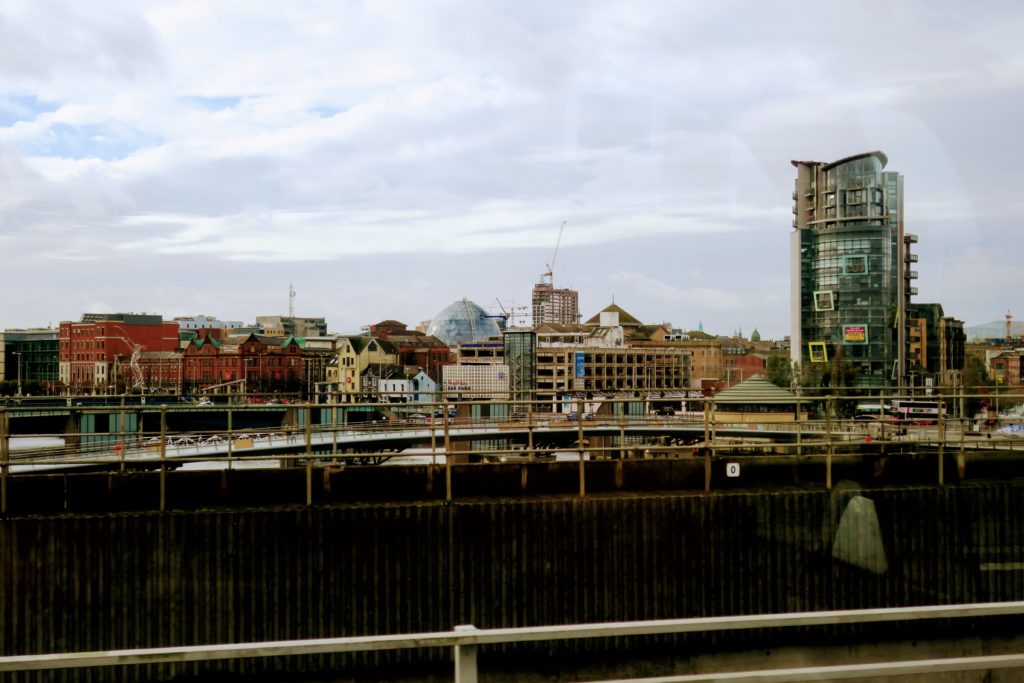
In the 19th century, Belfast was a key player in the industrial revolution and was at one time the world’s biggest producer of linen (the city was nicknamed ‘Linenopolis’). It was also a major ship builder and had the world’s biggest shipyard. The city’s most famous ship, unfortunately , is not known for the quality of its build but for its catastrophic sinking. Does the name RMS Titanic ring a bell?
All was not well in Belfast however. The partition of the countries did not sit well with many factions. Turbulent and incredibly violent times plagued the city, and in the 1970-1980’s, Belfast had the reputation as one of the world’s most dangerous cities.
As part of a bus tour, we had approximately 1-2 hrs in Belfast and were provided with two options: a visit to the Titanic museum or a “Famous Black Taxi Tour”. As much as the museum would likely be interesting, i couldn’t fathom coming all this way and not take the opportunity to learn more about the city and its history, and from a local, no less! Black taxi tour it is. This is how I found myself sitting with four americans in the back of Gerry’s taxi.
The Famous Black Taxi Tours have been carting visitors around the city for over a decade, providing a first hand account of ‘The Troubles’, a period of civil war in the city. Gerry, our guide and driver, not only lived through the bloodshed, but was an active participant. He spent the next 90minutes explaining both sides of the war, although with an obvious bias according to his beliefs.
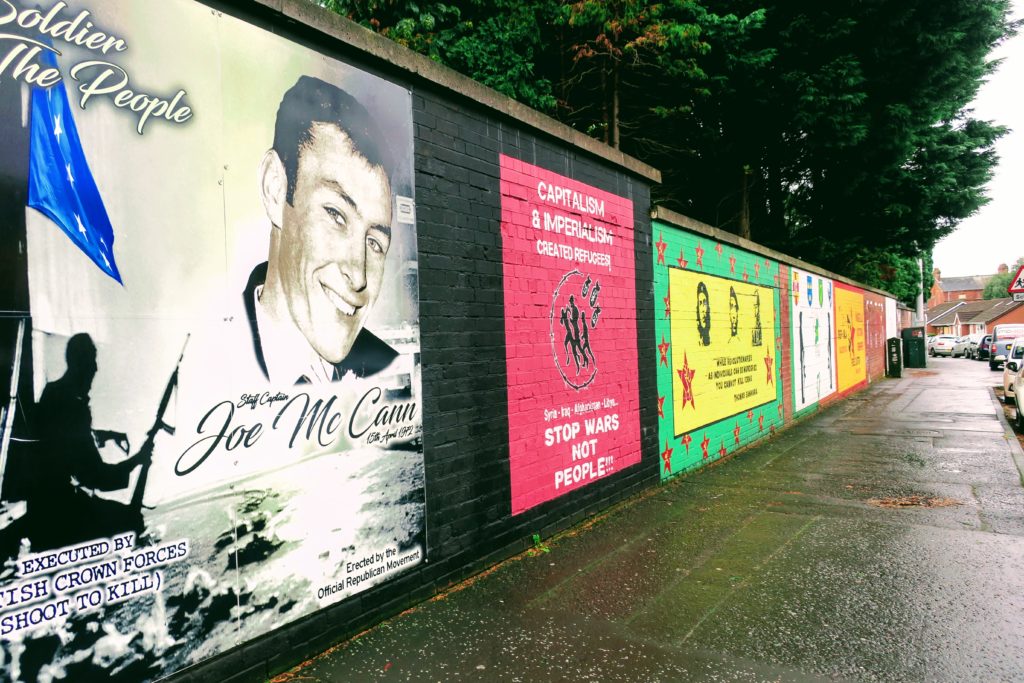
The Belfast Troubles is such a complex issue and one that I realized a knew very little about. A child of the 80-90’s in Canada, all I could remember was that the IRA were terrorist and that U2’s song ‘Sunday Bloody Sunday” had something to do with Ireland. Hearing Gerry’s account was eye-opening and heart wrenching. I have never met anyone personally who was so passionate about his convictions and his cause that he willingly and knowingly participated in violent means to achieve a desired end. While I like to believe that I am a pacifist, I am not self- righteous enough to pass judgement on all those men and women who took up arms during that turbulent period. How can any one of us know what it was like to live through that? And to know what our reaction would be?
Popular (maybe western) knowledge on the subject tells us that the civil war was fought mainly between the nationalist catholic community & the loyalist protestant community, however it was not so clear-cut as some protestants were nationalist/republicans and vice versa. As mentioned earlier, Northern Ireland at the time of the repartition was composed of a mainly protestant community. However, catholics were also very much present. According to Gerry, the British government so restricted the rights of catholics that they were not able to run for public office, practice their religion and so on. This was a major contributing factor to the war, however not the only one. The other motivating factor was independence. Many did not wish to remain British and preferred to re-unite with republican Ireland. Others strongly opposed this and remained staunch and loyal subjects. In the 1970’s, hostilities boiled over and chaos exploded all over the city.
 This is a very simplistic explanation and by no means do I even come close to comprehending the intricacies and history of the issue; I would strongly encourage any of you interested to read more on this subject as one thing was clear after my time with Gerry: the western world’s perspective and the local perspective are not always on the same page.
This is a very simplistic explanation and by no means do I even come close to comprehending the intricacies and history of the issue; I would strongly encourage any of you interested to read more on this subject as one thing was clear after my time with Gerry: the western world’s perspective and the local perspective are not always on the same page.
Gerry told us he was a member of the IRA, the Irish Republican Army, a paramilitary movement at the time. Even after all these years, including years in his youth spent behind bars, a hint of pride was still detectable in his voice. He is firm in his conviction that the British helped or at least allowed counter paramilitary groups (terrorists in his eyes) to inflict atrocities to his community. I had always thought the IRA were the terrorist group (maybe they were, it’s not for me to decide) but spending time touring around in the back of Gerry’s cab, listening to his recollections, I wasn’t so sure anymore.
He recounted very calmly how bombings, assassinations and street violence were a regular part of daily life. There were so many clashes between the two sides that a wall was erected to separate them. It was considered a ‘peace line’. The world has an ugly history with walls as means of containing or excluding certain groups of people, however the wall in Belfast was originally built as a temporary measure. Over the years, as conflict escalated, the wall became longer, higher, wider and more permanent. The wall is over 5 km, 25 feet high and made of iron, brick or steel (photo: above, right).
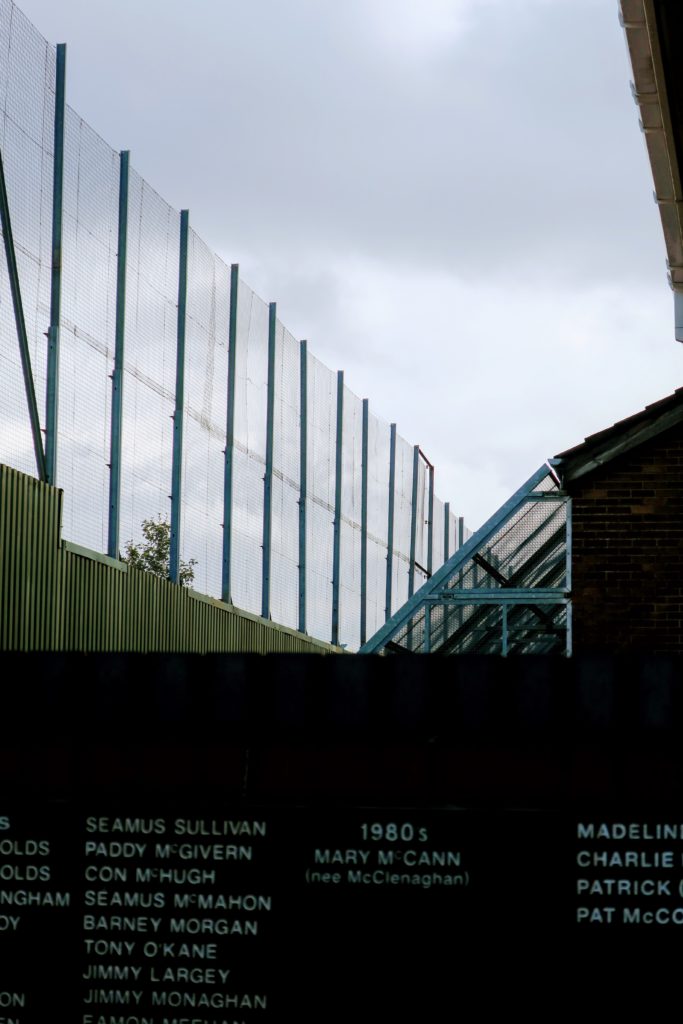 Today, the wall continues to stand and its gate are still closed every night. I couldn’t believe it! I had assumed that it was a thing of the past, however Gerry informed us that despite this period of relative peace, many feel the wall is still required to discourage communal fighting. He also mentioned that when youths escalate violence in the city, the “old timers” who were a part of the IRA are often called by neighbours to de-escalate the situation instead of resorting to police intervention. The wall is popularly refered to as the “peace wall” and many influential figures have signed it s a demonstration of peace and solidarity.
Today, the wall continues to stand and its gate are still closed every night. I couldn’t believe it! I had assumed that it was a thing of the past, however Gerry informed us that despite this period of relative peace, many feel the wall is still required to discourage communal fighting. He also mentioned that when youths escalate violence in the city, the “old timers” who were a part of the IRA are often called by neighbours to de-escalate the situation instead of resorting to police intervention. The wall is popularly refered to as the “peace wall” and many influential figures have signed it s a demonstration of peace and solidarity.
On the catholic / nationalist side, houses butted up against the wall. On the “British” side, it was streets or empty fields. It was so common for grenades and explosives to be thrown over the wall onto the houses (despite the wall height increasing), that special fencing was built onto these houses as protection.
Out of this bloodshed came Belfast’s most recognizable landmark: the murals. Both “sides” have created murals to remember their history and heroes, with an obvious slant based on which side of the wall it is on. Our tour took us to visit the murals on both side and involved some ‘colourful’ commentary from Gerry.
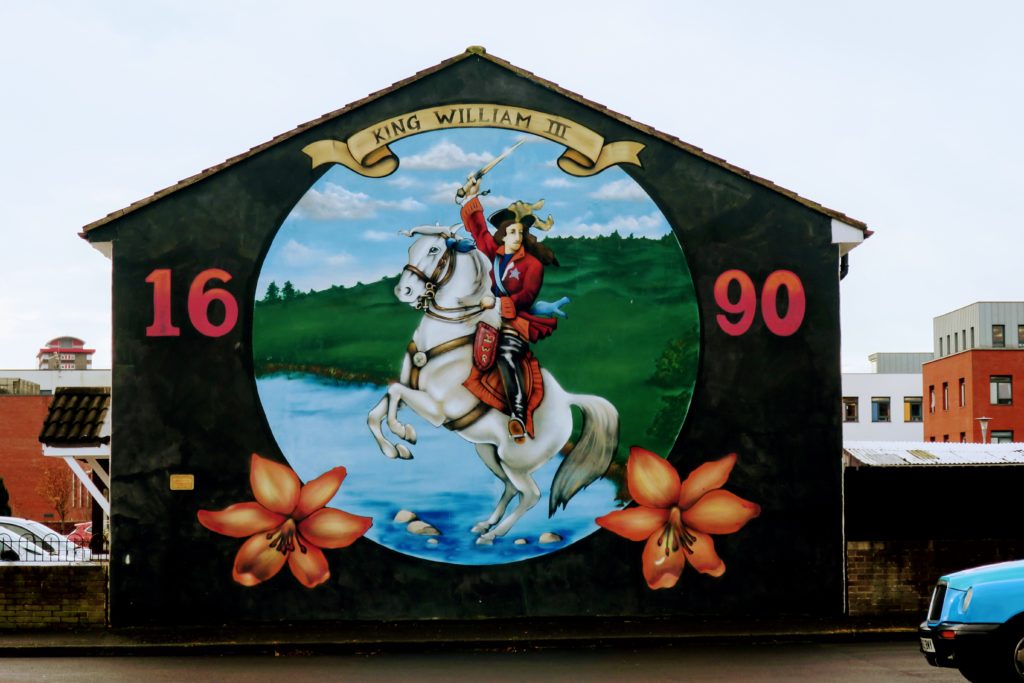
King William of Orange, a protestant king is often regarded as a hero on the loyalist side and elicits general disdain from the opposite factor. (above). One of the mural on the loyalist side is of this young “soldier”, heralding his valiant acts of war. Gerry’s opinion differed, unsurprisingly and he encouraged us to “google him” on our own. I did and discovered that Stephen McKeag was a leader of a paramilitary loyalist group inked to the ‘Shankhill Butchers’ fame and responsible for many killings of catholics, often civilians not actively participating in the conflict. He ultimately did of a drug overdose however remains immortalized as a hero of the cause. (below)
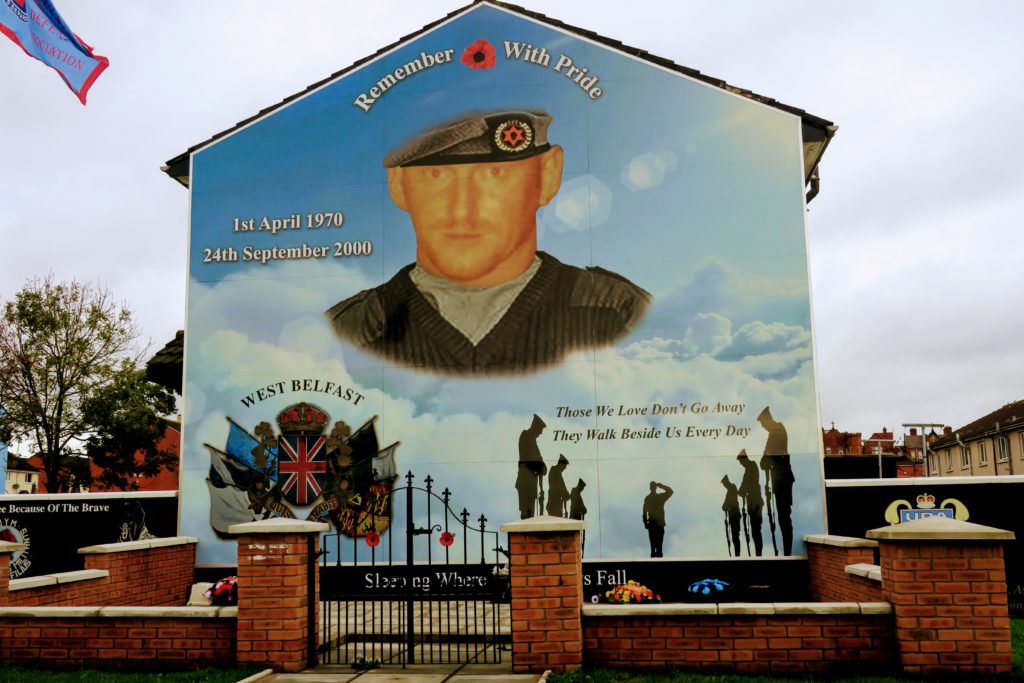
Murals on the nationalist side often denounce the “government conspiracy” they claim is covering up the truth of the British government’s involvement in the Troubles. (below)
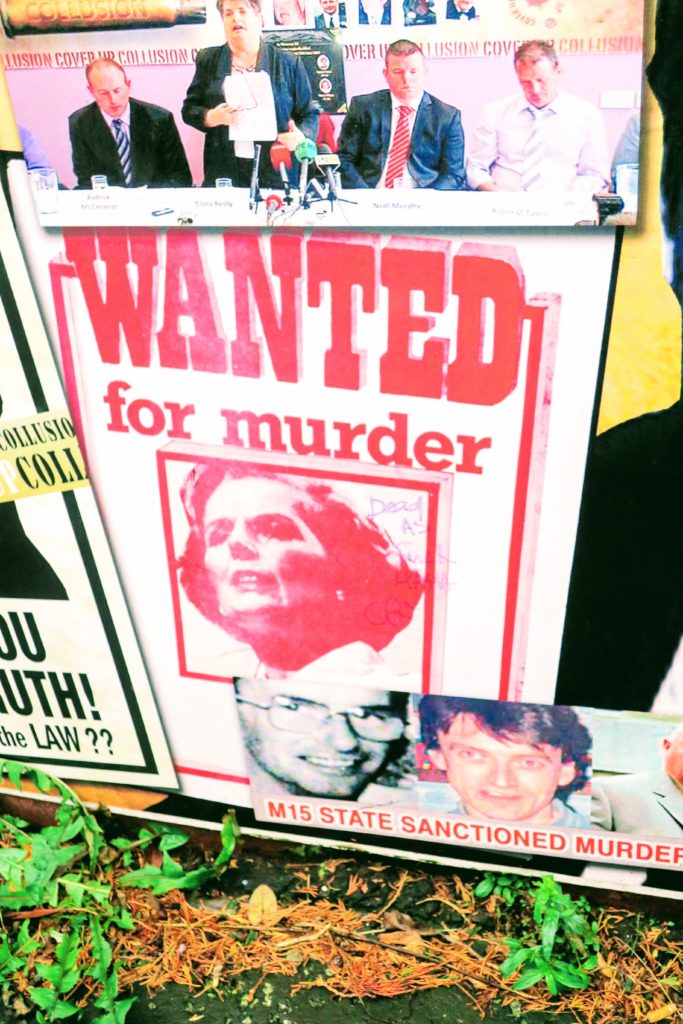
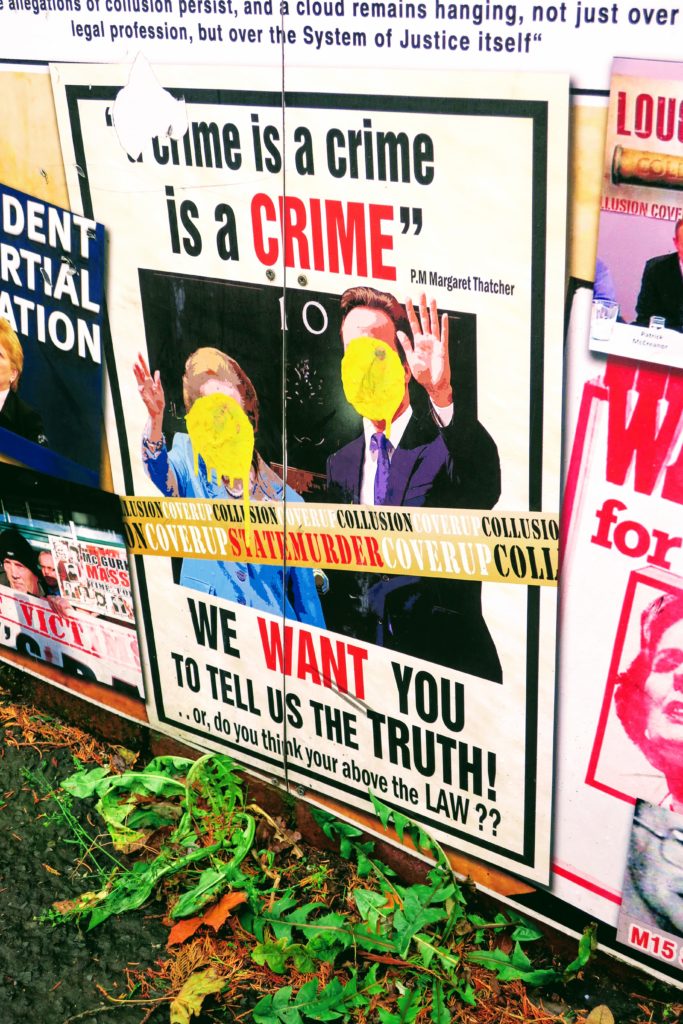
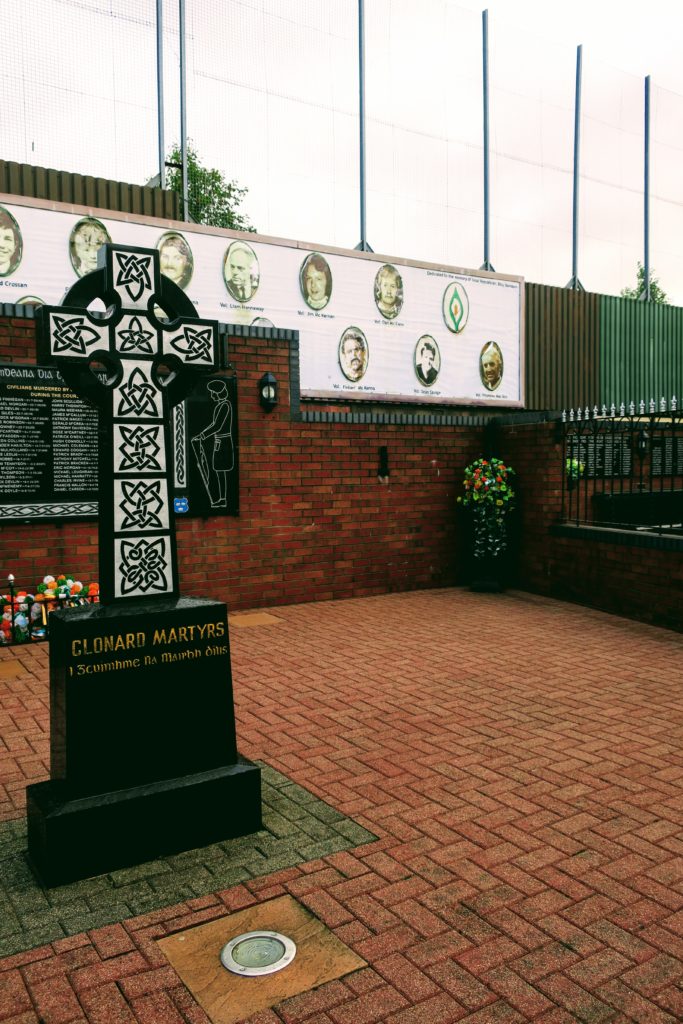 Many communities have ‘peace gardens’ or ‘remembrance gardens’, honouring fallen members of that community. This is where Gerry shared one of the most truthful and heart wrenching statements I’ve heard: “When the war ended, the British soldiers went home. That’s usually what happens, you don’t have to stay around where you killed people. However, we stayed. This is our home. When I go to a pub now, I might be sitting next to the mother or the brother of someone I killed. Sometimes, the IRA got it wrong. Our bombs were meant to kill the enemy but accidents happened and some of our own side was killed instead. At the pub, that person knows I accidentally killed their loved one. They know and I know it, and we continue to drink our beer in silence.”
Many communities have ‘peace gardens’ or ‘remembrance gardens’, honouring fallen members of that community. This is where Gerry shared one of the most truthful and heart wrenching statements I’ve heard: “When the war ended, the British soldiers went home. That’s usually what happens, you don’t have to stay around where you killed people. However, we stayed. This is our home. When I go to a pub now, I might be sitting next to the mother or the brother of someone I killed. Sometimes, the IRA got it wrong. Our bombs were meant to kill the enemy but accidents happened and some of our own side was killed instead. At the pub, that person knows I accidentally killed their loved one. They know and I know it, and we continue to drink our beer in silence.”
A settlement between the factions was reached in 1998 and the majority of the violence ceased. Although sporadic conflicts continued to erupt and still do to this day, Belfast is now a thriving city. Younger generations in Belfast do not have to worry about segregation the way their parents did: catholics and protestants, loyalists and nationalist all gather on the sidelines to watch their children play soccer together. There are integrated schools and many of the ex-paramilitary members were in community outreach programs to help heal the city. On an interesting side note, Gerry mentioned that, since the settlement, any Northern Irishman who wished could have a British passport and an Irish one (he himself held an Irish passport). He joked that with Brexit looming, everyone in Northern Ireland now wanted to be a republican and have an Irish passport!

The ‘Famous Black Taxi Tour’ did not disappoint and Gerry left such a powerful impact on me. I thanked him for his openness and candour in sharing his story. As difficult as it was to hear a first hand account of what happened, I was left feeling hopeful. It is a testament to the people of Belfast that they have been able to overcome this turbulent time and are now actively working together to grow their city to be one of peace and integration.

Thanks for sharing this insightful post. What an important education you are receiving! Your tour with IRA Gerry forces us to reflect on the complexities of war and social turmoil: who is a terrorist, what is state terrorism, who is crafting the dominant narrative? I respectfully offer that despite your parenthetical comment to the contrary, that it is crucially important for each of us to determine who is a “terrorist” rather than deferring our moral judgements to external agencies such as governments, media, historians, etc. Cheers!
Whatever education I receive, I feel I am thus obligated to impart onto others…;-)
Thanks for helping to shed some light on the city and its past – very interesting.
Kirby